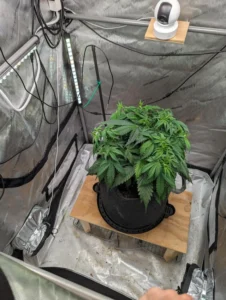Rag Weed, Ragweed is often overlooked as a significant allergen, but for millions of people, it’s a key trigger for seasonal allergies. Belonging to the Ambrosia genus, ragweed plants thrive in North America and are notorious for their ability to produce an immense amount of pollen. This article delves into what ragweed is, its effects on health, and how to manage its presence during peak seasons.
What is Ragweed?
Ragweed is a type of flowering plant that belongs to the aster family (Asteraceae). It typically grows in fields, along roadsides, and in disturbed areas. There are several species of ragweed, but the most common in North America is common ragweed (Ambrosia artemisiifolia). This plant can grow up to three feet tall and features jagged leaves that resemble those of other members of the aster family.
The Allergic Reaction
The main concern with ragweed is its pollen, which is released into the air during the late summer and fall. Ragweed pollen is lightweight and can travel long distances, often affecting individuals far from where the plants grow. For those allergic to ragweed, exposure can lead to a variety of symptoms, including:
- Sneezing
- Nasal congestion
- Itchy or watery eyes
- Coughing
- Fatigue
These symptoms can significantly impact daily life, leading many to seek relief through over-the-counter antihistamines or other allergy medications.
The Allergy Season
Ragweed pollen season typically begins in late July and can last until the first frost of the year. During this period, pollen counts can be particularly high on warm, dry, and windy days. Monitoring local pollen forecasts can help individuals prepare and take necessary precautions to minimize exposure.
Managing Ragweed Allergies
For those sensitive to ragweed, there are several strategies to help manage symptoms:
- Stay Informed: Check local weather and pollen forecasts to stay ahead of high pollen days.
- Limit Outdoor Activities: Try to stay indoors during peak pollen times, usually in the late morning and early afternoon.
- Create a Pollen-Free Zone: Keep windows closed and use air conditioning in your home and car.
- Shower After Being Outdoors: Washing off pollen from hair and skin can help reduce exposure.
- Consider Allergy Treatments: Consult with a healthcare provider for potential allergy shots (immunotherapy) or prescription medications.
Conclusion
Ragweed is more than just an unsightly plant; it’s a major contributor to seasonal allergies for millions of people. By understanding ragweed and its effects, individuals can take proactive steps to minimize their exposure and manage their symptoms effectively. Awareness and education are essential in combating the discomfort caused by this common allergen, allowing those affected to enjoy life to the fullest even during peak ragweed season.
You Might Also Like These:



